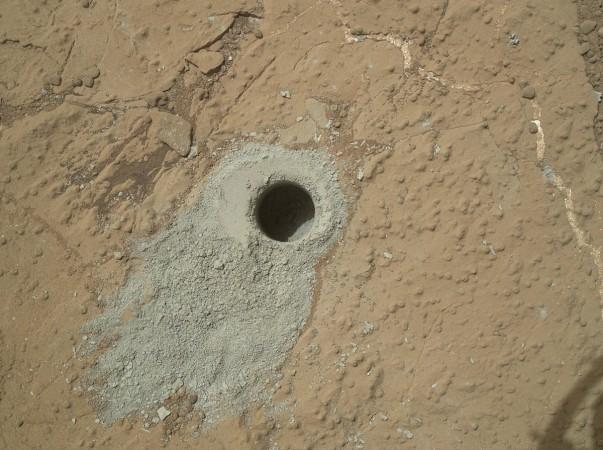
Certified organics! I detected organics for the 1st time on the surface of Mars #AGU14 http://t.co/TsMs5LEW8b pic.twitter.com/AVk5Wxp5G0
— Curiosity Rover (@MarsCuriosity) December 16, 2014Is there life on Mars? NASA scientists claim to have detected traces of methane for the first time that faintly indicate towards that direction.
Almost a year after NASA's Curiosity Rover found no traces of methane on the Red Planet, scientists reveal that the space exploration vehicle has now recorded a burst of methane that lasted at least two months and then disappeared.
NASA scientists are trying to determine the cause and are not ruling out presence of methane-belching microbes on Mars.
"We can't rule it out," Chris Webster, a researcher at NASA's Jet Propulsion Laboratory told NBC News.
"It's equally likely to be geophysical or biogenic. ... The fact that we've seen it, in a sense, argues that the stock in a possible biogenic source went up," added Webster, who's the lead author of a paper that seeks to unravel the mystery, in the journal Science.
The presence of methane is a crucial discovery as the gas cannot stay for long. It means that since sunlight and chemical reactions in the Martian atmosphere would break up the molecules withing a few hundred years, the gas must have been created very recently.
It can be a product of a geological process called serpentinization - which requires both heat and liquid water - or it could have been created by some living organism like microbes known as methanogens - which release methane as waste product.
Also, it is for the first time that the scientists have confirmed that they found evidence of carbon-based organic molecules in a rock sample. The presence of organic substance does not indicate direct signs of life, past or present, in the planet, but it does show that there is a possibility of Mars possessing ingredients that can support life and might even have living organisms.
A Curiosity scientist Sushil Atreya puts forth another possible explanation for the presence of methane on Mars. "These are molecular cages of water-ice in which methane gas is trapped. From time to time, these could be destabilised, perhaps by some mechanical or thermal stress, and the methane gas would be released to find its way up through cracks or fissures in the rock to enter the atmosphere," the University of Michigan professor told BBC News.















